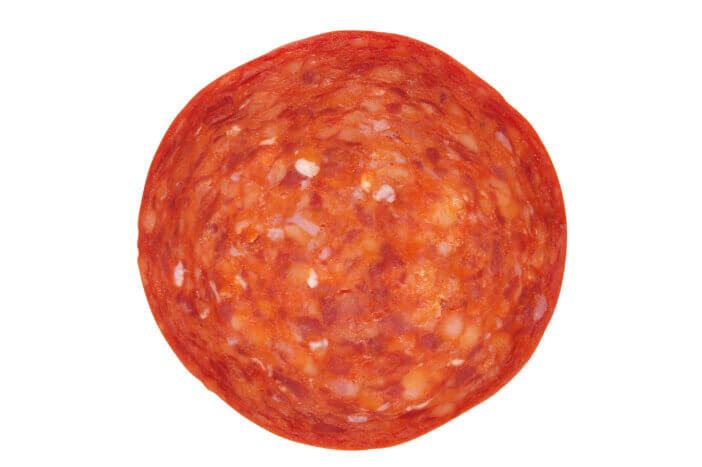10 Reasons Why Pepperoni Is Addictive and How It Triggers Cravings
Pepperoni’s addictive allure lies in its complex flavor profile, high salt content, perfect fat ratio, umami taste, and psychological appeal, creating a symphony of sensory experiences that keep us craving more.

Pepperoni is more than just a popular pizza topping; it’s a culinary sensation that has captured the taste buds of millions. Understanding the reasons behind its addictive nature can help us appreciate this savory delight even more.
Disclosure: As an Amazon Associate, this site earns from qualifying purchases. Thank you!
1. The Allure of Pepperoni

Pepperoni has a distinct place in the hearts and stomachs of many, often associated with comfort and indulgence. Its bright red appearance, dotted with characteristic white fat marbling, is instantly recognizable and signals a promise of flavor that many find irresistible. The allure is not only visual but also rooted in the anticipation of the taste experience that pepperoni provides, making it a go-to choice for many meat lovers.
2. Pepperoni’s Flavor Profile
Pepperoni’s flavor profile is complex and robust, featuring a blend of spices such as paprika, garlic, black pepper, and sometimes fennel or anise. This combination creates a warm, slightly smoky taste with a hint of tanginess and spice that tantalizes the palate. The balance of flavors in pepperoni is carefully crafted to hit all the right notes, ensuring that every bite is as satisfying as the last.
3. The Science of Cravings

Cravings are a powerful force, and the science behind them explains why pepperoni can be so addictive. Our brains are wired to seek out foods that deliver a high degree of pleasure, and pepperoni’s combination of flavors and textures stimulates the brain’s reward centers. This release of dopamine, a neurotransmitter associated with pleasure, reinforces the desire to keep eating pepperoni, turning occasional indulgence into a persistent craving.
4. Salt Content and Addiction
Salt is a significant factor in food addiction, and pepperoni is no exception. The high salt content in pepperoni not only enhances its flavor but also contributes to its addictive properties. Salt triggers the release of dopamine, much like sugar, and the body’s positive response to this pleasure-inducing chemical can lead to a cycle of cravings and repeated consumption of salty foods like pepperoni.
5. Pepperoni’s Perfect Fat Ratio

The fat content in pepperoni plays a crucial role in its addictive quality. The ratio of fat to lean meat is carefully calibrated to deliver a rich and satisfying mouthfeel. Fat is a carrier for flavor, meaning that the spices and seasonings in pepperoni are more pronounced because of the fat content. Moreover, fat has a high satiety factor, which can paradoxically lead to overeating as the body takes longer to signal that it’s full, allowing more time for the enjoyment of pepperoni’s flavors.
6. Umami: The Taste of Addiction
Umami, the fifth basic taste, is often described as a savory or meaty flavor, and it is abundant in pepperoni. This taste is produced by glutamates, which occur naturally in pepperoni’s meat and are enhanced by the fermentation and curing processes. Umami-rich foods are known to be particularly moreish, and pepperoni’s deep umami flavor keeps people coming back for slice after slice.
7. The Psychological Appeal

Beyond the physical properties, pepperoni has a strong psychological appeal. It is often associated with positive memories, such as pizza parties or family gatherings, reinforcing the emotional connection to the food. This psychological appeal can trigger cravings for pepperoni as a way to relive fond experiences or evoke a sense of nostalgia, creating a powerful incentive to indulge in this savory treat.
8. Pepperoni’s Texture Temptation
Texture is a significant aspect of why pepperoni is so addictive. The slight resistance followed by a tender chew provides a satisfying tactile experience when eating pepperoni. This textural contrast, especially when coupled with the crispness of a pizza crust or the softness of a sandwich bread, creates a dynamic eating experience that is both pleasurable and memorable.
9. How Cooking Enhances Flavor
Cooking pepperoni amplifies its flavor in several ways. The heat from cooking helps to render the fat, which spreads its flavors throughout the meat and onto whatever it’s cooked with. Additionally, the Maillard reaction that occurs when pepperoni is cooked at high temperatures creates a complex array of flavors and aromas that are not present in raw pepperoni, making the cooked version even more irresistible.
10. The Role of Aroma in Cravings
Aroma plays a vital role in how we perceive and crave foods, and pepperoni’s aroma is particularly enticing. The scent of pepperoni cooking can trigger salivation and a desire to eat, even if we’re not hungry. This olfactory stimulation is a direct line to the brain’s appetite centers, making the smell of pepperoni a powerful trigger for cravings and subsequent consumption.
Pepperoni’s addictive nature is a symphony of taste, aroma, texture, and psychological appeal that captivates our senses and leaves us wanting more. Understanding these savory reasons can deepen our appreciation for this beloved topping and might even explain why we find it so hard to resist just one more slice.






